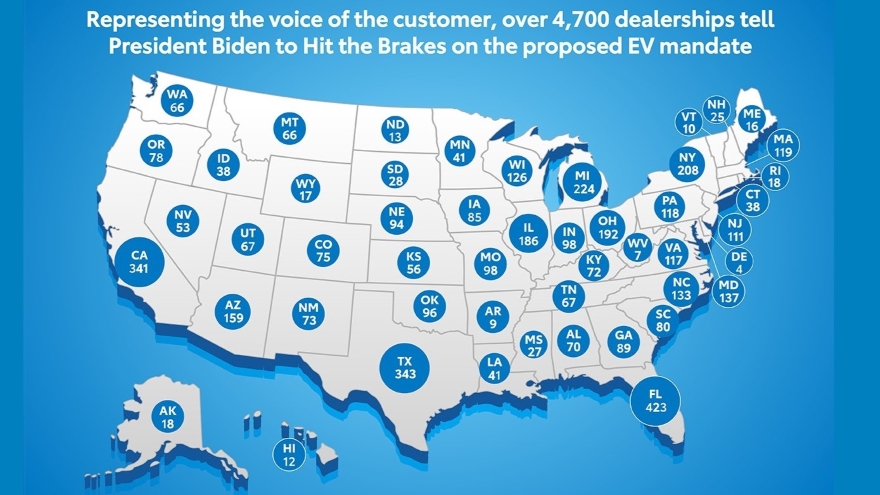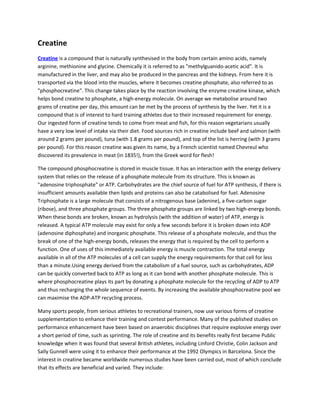Resistance Grows: Car Dealers Challenge EV Mandate Policies

Table of Contents
Economic Concerns of Car Dealerships Facing EV Mandates
Car dealerships face significant economic challenges adapting to EV mandate policies. The rapid shift to electric vehicles requires substantial investments and changes to existing business models.
Investment Costs and Infrastructure Requirements
Meeting EV mandate policies demands considerable upfront investment. Dealerships must invest in:
- Charging infrastructure: Installing Level 2 and DC fast chargers requires significant capital expenditure, varying depending on the number of stalls and the type of chargers installed. Estimates range from $5,000 to $50,000 per charger, plus installation costs.
- Technician training: EVs require specialized training for mechanics to diagnose and repair high-voltage systems and batteries. This involves costly training programs and potentially hiring additional specialized technicians.
- Inventory adjustments: Dealerships need to allocate space for EV charging and service, potentially impacting the space allocated to traditional vehicles.
The limited profitability of EVs compared to gasoline vehicles in the short term further exacerbates these financial burdens. Many dealers report lower profit margins on EV sales due to higher initial purchase costs and less lucrative service revenue streams. Meeting mandated EV sales quotas therefore necessitates a significant capital investment with uncertain short-term returns.
Inventory Management Challenges
Balancing EV and gasoline vehicle inventory presents a major logistical headache. Dealerships struggle to:
- Predict consumer demand: Accurately forecasting future EV sales is difficult, leading to the risk of overstocking EVs if consumer adoption lags behind mandated quotas.
- Manage diverse consumer needs: Maintaining a balanced inventory to cater to diverse consumer preferences for different vehicle types poses a considerable challenge.
- Optimize warehouse space: The increased size and weight of EV batteries may require additional warehouse space and specialized storage solutions.
For example, a dealership might find itself with a surplus of unsold EVs while lacking sufficient gasoline vehicles to meet current customer demand, resulting in lost sales opportunities.
Impact on Existing Sales and Service Models
Adapting to EVs necessitates significant changes to existing sales and service practices. Dealerships must:
- Invest in new sales tools and training: Sales staff needs training on EV technology, features, and incentives to effectively sell EVs to customers. This requires investment in new training materials and potentially new sales software.
- Update service departments: Service departments require specialized tools, training, and equipment for EV repair and maintenance, requiring additional investments and potentially impacting existing workflows.
- Adapt marketing and advertising: Marketing and advertising campaigns need to adapt to showcase the benefits of EVs and address consumer concerns about range, charging infrastructure, and cost.
Consumer Demand and Market Readiness for EV Mandates
While EV mandate policies aim to accelerate the transition to electric vehicles, consumer demand and market readiness remain significant factors.
Consumer Affordability and Accessibility
The high purchase price of EVs is a significant barrier to widespread adoption.
- Limited options for lower-income consumers: The lack of affordable EV options restricts accessibility for many lower-income consumers.
- Charging infrastructure gaps: Uneven distribution of charging infrastructure, particularly in rural areas, creates "range anxiety" and discourages EV adoption.
Data shows that the average price of an EV remains significantly higher than that of a comparable gasoline-powered vehicle.
Range Anxiety and Charging Infrastructure Gaps
Range anxiety—the fear of running out of battery charge—remains a major concern for potential EV buyers.
- Inadequate charging infrastructure: The lack of sufficient public charging stations, especially fast-charging options, hampers EV adoption, particularly for long-distance travel.
- Uneven geographical distribution: Charging infrastructure is often concentrated in urban areas, leaving rural communities underserved.
This lack of readily available and reliable charging options directly impacts consumer confidence and willingness to switch to electric vehicles.
Consumer Preferences and Vehicle Choice
Consumer preferences vary significantly across different markets and demographics.
- Continued preference for gasoline vehicles: In many regions, consumer preference for gasoline-powered vehicles remains strong, fueled by factors such as familiarity, cost, and perceived convenience.
- Resistance to government mandates: Some consumers resent government intervention dictating their vehicle choices, preferring to make purchasing decisions based on their individual needs and preferences.
Understanding these preferences is critical for crafting effective EV adoption strategies.
Legal Challenges and Policy Implications of EV Mandates
The implementation of EV mandate policies faces significant legal and political challenges.
Legal Arguments Against EV Mandates
Various legal arguments challenge the validity of EV mandates.
- Government overreach: Critics argue that EV mandates constitute government overreach into the free market and infringe upon the rights of businesses and consumers.
- Constitutional challenges: Some legal challenges question the constitutionality of certain EV mandate policies, arguing they violate principles of due process or equal protection.
Several lawsuits have already been filed challenging the legality and implementation of various EV mandate policies across different jurisdictions.
Potential Amendments and Policy Revisions
To address the concerns raised by car dealers and consumers, modifications to current EV mandate policies are necessary.
- Phased implementation: A gradual, phased implementation of EV mandates would allow the market to adapt more smoothly and mitigate the disruptive effects on dealerships and consumers.
- Government incentives: Increased government incentives, such as tax credits and subsidies, can encourage EV adoption without resorting to mandatory quotas.
- Focus on infrastructure development: Prioritizing investment in charging infrastructure and grid modernization is crucial to alleviate range anxiety and increase consumer confidence in EVs.
These amendments are crucial for achieving a more equitable and effective transition to electric vehicles.
Conclusion
The resistance to EV mandate policies highlights the complex interplay between environmental goals, economic realities, and consumer preferences. While the transition to electric vehicles is crucial for environmental sustainability, the concerns raised by car dealerships regarding the economic impact of these mandates cannot be ignored. The challenges related to consumer affordability, charging infrastructure, and consumer preferences also require careful consideration. To foster a successful transition to electric vehicles, a balanced approach that addresses both environmental sustainability and the economic concerns raised by the resistance to EV mandate policies is crucial. Let's continue the conversation and find solutions that work for everyone, exploring alternative EV adoption strategies that prioritize both environmental protection and economic viability. The future of electric vehicles depends on finding a path that balances these competing needs, ensuring a smooth and equitable transition for all stakeholders.

Featured Posts
-
 Rekordsmen N Kh L Po Silovym Priemam Zavershaet Kareru
May 15, 2025
Rekordsmen N Kh L Po Silovym Priemam Zavershaet Kareru
May 15, 2025 -
 What Is Creatine A Guide To Its Uses And Effects
May 15, 2025
What Is Creatine A Guide To Its Uses And Effects
May 15, 2025 -
 Frederieke Leeflang Npo Toezichthouder Belooft Onmiddellijke Actie
May 15, 2025
Frederieke Leeflang Npo Toezichthouder Belooft Onmiddellijke Actie
May 15, 2025 -
 Sukhoy Match Bobrovskogo Pyatiy V Karere V Pley Off
May 15, 2025
Sukhoy Match Bobrovskogo Pyatiy V Karere V Pley Off
May 15, 2025 -
 Bidens Russia Ukraine Policy Under Scrutiny Vances Sharp Criticism
May 15, 2025
Bidens Russia Ukraine Policy Under Scrutiny Vances Sharp Criticism
May 15, 2025
Latest Posts
-
 Bidens Russia Ukraine Policy Under Scrutiny Vances Sharp Criticism
May 15, 2025
Bidens Russia Ukraine Policy Under Scrutiny Vances Sharp Criticism
May 15, 2025 -
 Senator Vance Questions Bidens Stance On Trumps Russia Ukraine Policies
May 15, 2025
Senator Vance Questions Bidens Stance On Trumps Russia Ukraine Policies
May 15, 2025 -
 Tramp I Negovite Napadi Mediumite I Sudstvoto Pod Pritisok
May 15, 2025
Tramp I Negovite Napadi Mediumite I Sudstvoto Pod Pritisok
May 15, 2025 -
 Bidens Response To Trumps Russia Ukraine Policy Vances Critique
May 15, 2025
Bidens Response To Trumps Russia Ukraine Policy Vances Critique
May 15, 2025 -
 Analiza Trampovite Napadi Vrz Mediumite I Sudstvoto
May 15, 2025
Analiza Trampovite Napadi Vrz Mediumite I Sudstvoto
May 15, 2025
